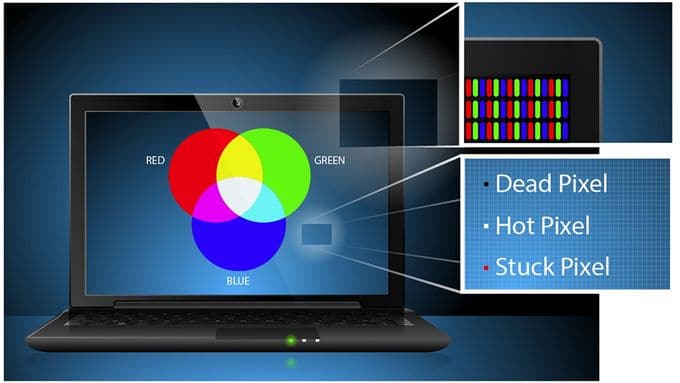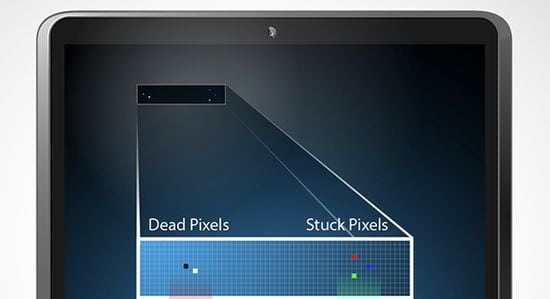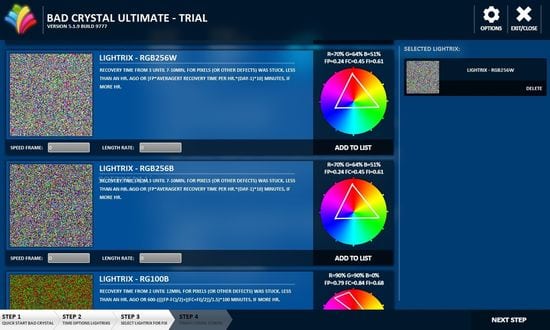Defective pixels are one of the main disadvantages of the LCD TVs.
Dead pixels look like small black or white spots on the screen. Hot or stuck pixels look like colored dots. They appear due to incorrect dependence of the output signal from input signal. In turn, their ratio depends of such factors, as temperature, state of the neighboring pixels, etc.
Modern TVs use active matrix that consists a large number of pixels. Unfortunately, today companies can not provide the serviceability each of them. Defective pixel on the screen can appear in case of failure the control transistor or when the sub-pixel is stuck in one of the positions due to failure.
Types of defective pixels
Recovering a black defective pixel is practically impossible in case of the transistor failure. It looks like a black dot on screen and is well visualized on a white or light image. The failure of sub-pixel is a most unpleasant defect, because the colored point attracts the much more attention than the dark dot. In factory conditions the corresponding transistor is removed, and the colored dot turns into a black dot.
The effect of stuck pixel occurs when pixel is freezes in one of the positions. Some users are trying to do the so-called massage at point with defective pixel. They very careful perform the mechanical impact on the screen surface in the defect point, in the hope that the crystal will begin again normally to work. The video at the end shows this method. But this procedure contains a risk of damage of several neighboring pixels. Software methods are more reliable, moreover, today the Internet offers quite a lot of effective programs.
Sometimes hot pixels disappear on their own with time.
Permissible number of defective pixels
The flaws of manufacturing and technology are the main causes of defective pixels. Today ISO-9241-302, 303, 305, 307 standards regulate the amount of allowable defects in the matrix. Standards contain three classes of measurement of pixel defects in LCD monitors. The number of acceptable pixel defects per 1 (one) million in the TFT / LCD matrix is:
1. Panels of class 0 completely without defects;
2. Panels of class 1 admit any or all types of defects:
– 1 permanently lit (“white”) pixel;
– 1 permanently off (“black”) pixel;
– 2 single bright or dark sub-pixels;
– from 3 to 5 “white” or “black” subpixels.
3. Panels of class 3 admit of any or all kinds of defects:
– 2 completely light;
– 2 completely dark;
– 5-10 single or double light or dark subpixels.
4. Panels of class 3 admit any or all types of defects:
– 5 completely light pixels;
– 15 completely dark pixels;
– 50 single or double subpixels.
The consumer can use guarantee in the case of exceeding these values.
Therefore, testing on availability of the defective pixels is important at TV buying. For example, the popular Nokia Monitor Test, very reliable tests the screen of display.
This is one of the most popular programs in the Internet. Laptop and VGA-cable provide connection to the selected TV. Program carefully checks all surface of the screen in each of three color fields (red, blue, green). Verification is carried out with the help of change the fill color (black, white, red, green, blue). Color icon in Nokia Monitor Test provides this function. The absence of dots with another color indicates the absence of defective pixels.
Hot pixels are searched using the screen fills. Nokia Monitor Test uses checkerboard and grid (Moire icon).



